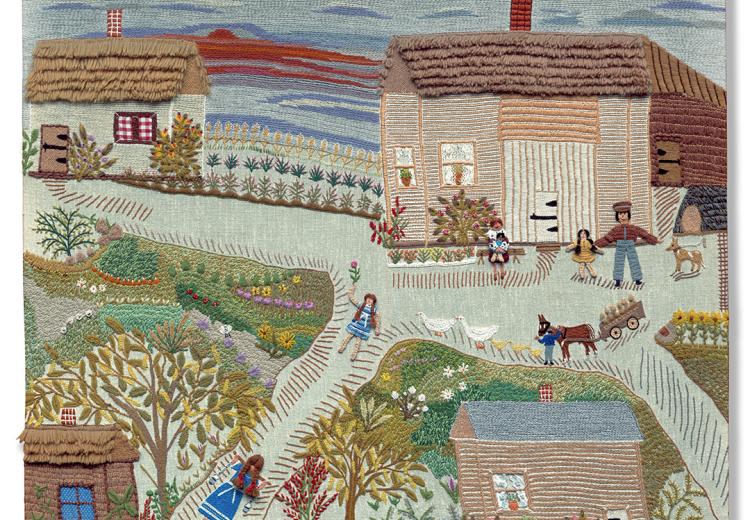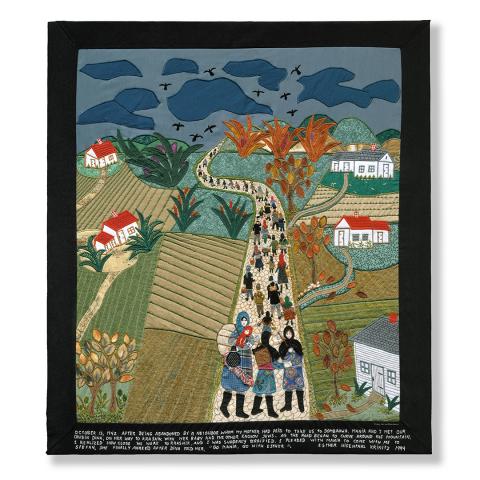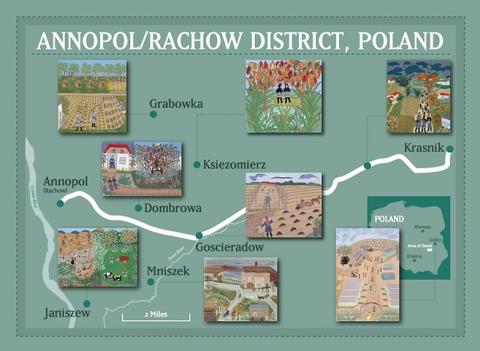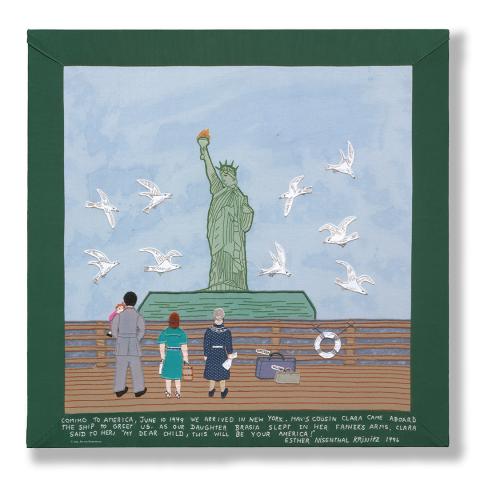Art and Remembrance: Using Art to Teach the Holocaust and Combat Hate

“My childhood home in the village of Mniszek, near the city of Rachow (today Annapol), Poland. I am carrying water up the hill to our house; my sister, Mania, waits for me. My brother Ruven is standing with the wagon. My father and my sister, Chana, are in front of the house, along with my mother, who holds my youngest sister, Leah.”
Esther Nisenthal Krinitz, 1977
Esther Nisenthal Krinitz was 15 in 1942 when Nazis ordered the Jews of her Polish village to report to a nearby train station. She chose to flee with her 13-year-old sister, never to see the rest of her family again.
Decades later, determined to show her daughters the family she had lost, Esther created a series of 36 exquisite works of fabric collage and embroidery—a legacy of love, grief and the sheer force of memory. Inspired by Esther's story, Art and Remembrance uses art and personal narrative to recognize individual courage and resilience, and to foster understanding and compassion for those who experience injustice.
The lessons from Esther’s art and story are immediate and understandable, nurturing empathy and courage, while her art brings the Holocaust to life in a markedly different way than the black-and-white photos more typical of the period. Drawing from Esther’s art and story, free educational materials offer students a way to comprehend the perseverance of a young girl within the context of historical events, using the Holocaust as the primary content.

“October 15, 1942. After being abandoned by a neighbor whom my mother had paid to take us to Dombrowa, Mania and I met our cousin Dina, on her way to Krasnik with her baby and the other Rachow Jews. As the road began to curve around the mountain, I realized how close we were to Krasnik and I was suddenly terrified. I pleaded with Mania to come with me to Stefan. She finally agreed after Dina told her, ‘Go Mania, go with Esther.'"
Esther Nisenthal Krinitz, 1994



